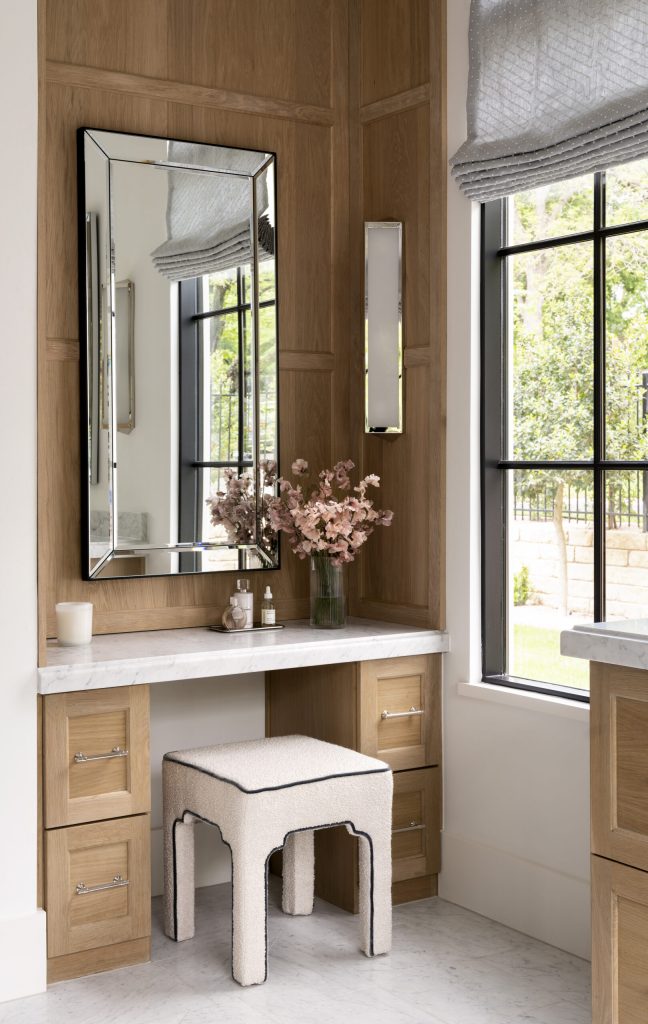What is arguably the biggest question in how to make your business as profitable as it can be? Should I charge a flat fee or an hourly fee? Both can be profitable but it requires vocalizing unwavering confidence of your worth. Below, we’re breaking down these two fee types so you can make the right decision for your projects and design firm (maybe it’s both!). Identify and implement…let’s do this!
Pricing Precision: Achieving Yearly Success through Mastery of Flat Fees and Hourly Rates

FLAT FEE BILLING
Flat fee billing is a widely adopted method in interior design that sets a fixed project price. This approach hinges on the project’s scope, size, and required work. While it offers clarity to clients, it comes with its own set of advantages and disadvantages..

PROS
- Streamlined Pricing: Flat fee billing offers clients a finite understanding of their financial commitment, eliminating surprises and unexpected costs during the project. We will add a caveat that the only unexpected occurrence should be a modification to the scope, (which could be caused by construction delays) would probably prompt a revision to the flat fee. Sara Malek Barney of Bandd Design, our ambassador in Texas, makes a compelling case in this Key Call.
- Efficiency Equals Profit: With flat pricing established at the onset of a project, you and your staff are freed up to design and execute to your fee’s (not your heart’s) extent.
- Cash Flow Control: Managing cash flow is simplified with flat fee billing. You have a precise grasp of your earnings and when to expect them, facilitating effective budgeting and financial planning.
CONS
- Estimation Challenges: Accurately estimating the necessary time and resources for a given project is tricky. Underestimating can lead to losses (and bitterness!), while overestimating may result in clients feeling gauged and declining your services.
- Scope Ambiguity: To avoid scope-related disputes, you must clearly define the project’s scope and the services included in the flat fee. Failing to do so can lead to additional work that erodes your profits. It is equally important to explain how you will bill and deliver additions to the scope. If a portion of your scope is deducted or paused, describe how you will handle such an event. More on this topic can be found in our guide, What I Wish I Knew to Include in a Worry Free, Ironclad Interior Design Contract.
- Project Risk: Flat fee billing can pose a financial risk if unforeseen complications or changes, especially in construction, in project requirements arise. These unexpected factors can disrupt your budget and profit margins.
HOURLY FEE BILLING
Hourly rate billing entails charging clients for each hour spent on a project. This billing approach offers a dynamic set of pros and cons, influenced by factors like your experience level, project complexity, and location.
PROS
- Precise Tracking: Hourly rate billing enables accurate tracking of time and resources spent on a project. This data serves as a valuable tool for estimating future project durations, enhancing long-term profitability.
- Flexibility in Pricing: The flexibility of hourly billing shines when projects require more effort than initially envisioned. You can bill clients for additional hours (without a theoretical amendment to the contract with an additional scope fee), ensuring equitable compensation for your work.
- Transparency: Clients gain insight into the exact time spent on their project. Yes, sometimes it takes far longer than a client may imagine to source something small, but think about how much longer and harder it would have been for them to solely attempt to find that item or solve that problem on their own.
CONS
- Estimation Challenges: Accurately gauging the required project time can be challenging. Discrepancies may lead to disputes with clients who perceive overbilling.
- Client Hesitation: Hourly rate billing can give rise to client uncertainty about their investment. The ambiguity of final expenses may deter some potential clients. Pro tip: Provide an estimated cost range based on the amount of hours you think it will take to present and deliver their project to ease their uncertainty. If you think you may have missed some time, then pad the estimate by at least 20%.
- Rushed Decisions: Clients under hourly billing may feel the urgency to expedite project completion, potentially resulting in hasty decisions and a compromised attention to detail. Yet another reason to pad the estimated fee.

interior design by bandd design. photography by ryann ford.


